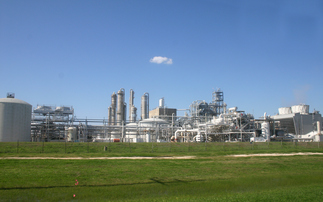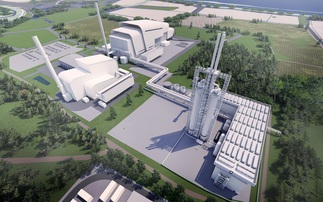This week, as vice chairman of the review committee for the Zayed Future Energy Prize, I had the chance to assess first hand many great examples of renewable energy and emissions reducing technologies and solutions from SMEs and NGOs, large corporations and individuals from around the world.
In fact I was very encouraged to see that in addition to energy efficiency and carbon reduction initiatives, quite a few of this year's submissions were from influential groups or organisations that advocate green transparency among companies around the world.
What's more, companies - particularly the larger ones that have been shortlisted for the prize - are already accounting for their carbon footprint and notably taking action to reduce the same.
This is encouraging, but there's still a long way to go till we reach that green dream! There's a significant gap between the potential for deployment and impact of carbon reduction technologies - particularly CCS - and where we are at today.
Carbon capture and storage (CCS) technologies have the potential to achieve substantial reductions in global energy-related CO2 emissions, and dramatically slow down global warming - if deployed at a significant scale, in a timely manner and at competitive costs (essential to attracting firm and robust investments).
In fact, the International Energy Association (IEA) estimated that by 2050, CCS could reduce the total global energy-related CO2 emissions by 50 per cent, and help meet the overall goal of keeping the global temperature increase below 2°C.
The technology and technical know-how exist. Whether it's adding chemical scrubbers to existing coal or gas fired power plants, or building new plants that gasify the coal before burning it, or 'carbon recycling' (cap¬ture and process the CO2) for onward use in industrial and energy and power generation applications that create a 'closed loop' carbon cycle - it is evident that we have the knowledge and there is a diversified portfolio of advanced technologies available.
Back in 2008, the G8 group (which includes the United States., Russia and Japan) made plans to launch 20 large-scale CCS demonstration projects by 2010 with 'broad deployment' of the technology by 2020. Bloomberg New Energy Finance reported that governments worldwide committed some $22.5bn to support CCS since the beginning of 2008.
The reality today is quite a different one compared to three years ago: one fifth of the world's CCS projects have been delayed or cancelled according to the Global Carbon Capture and Storage Institute.
The odds appear to be stacked against CCS, but as with any new wide-reaching technology, this is due - to a large extent - to the fact that there's currently no precedent to follow in this new emerging sector, no global operational framework adopted yet (no explicit policy that sets limits, and hence a price tag, on greenhouse gas emissions), and there's a high degree of experimentation that comes with that.
Still, with all its challenges, no other technology comes close to matching the potential of CCS in the fight against global warming. The most pressing issues for CCS are in the research, development and demonstration (RD&D) & policy making area. The completion of several larger-scale demonstration plants over the next few years is critical for CCS to gain market share and become commercially viable.
How will we get there?
The climate crisis requires that we act now. For every five years of inaction, there's an extra gigatonne of gas emissions waiting to be reduced.
The CCS industry stands to benefit from the United Nation's Clean Development Mechanism (CDM) which can potentially stimulate growth and provides additional incentives for CCS projects around the world to become economically feasible.
No doubt, this is a prolific time for energy technologies. I think the critical factor lies in stronger collaboration and commitment between all the parties involved: governments and the private sector, the companies developing alternative carbon-capture approaches and the ones creating the infrastructure intended to sequestrate the carbon dioxide.
This is precisely what the Zayed Future Energy Prize aims to fuel globally: collaboration and a community of innovation, knowledge and best practice sharing.
I am a passionate supporter of the Prize and I am proud that the UAE has committed to taking a leadership role in renewable energy and sustainability, its role in the CCS sphere is particularly notable as the potential for the deployment of such technologies is tremendous, here and around the world.
I firmly believe that over the next few years CCS will emerge as an economically attractive technology for mitigating carbon emissions on a large scale, and I'm looking forward to hearing over the coming years about more and more new CCS solutions from the Zayed Future Energy Prize - the world's stage for future energy innovations!
Bader Al Lamki is the director of Masdar Carbon







